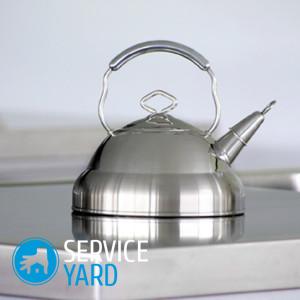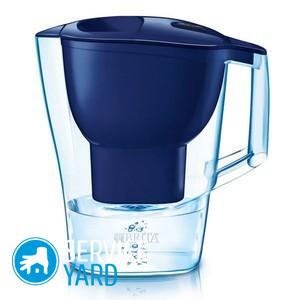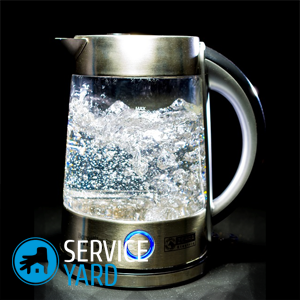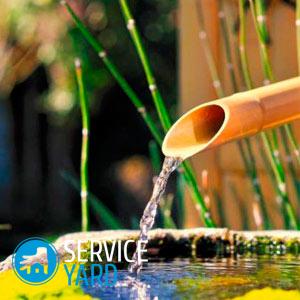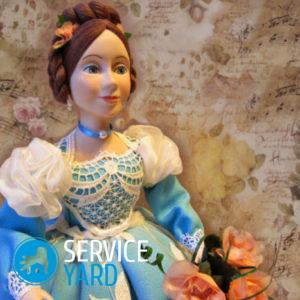How to clean the kettle from limescale using citric acid?
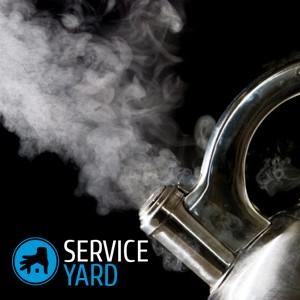
Any housewife in the kitchen has a kettle - someone with an electric, someone with a metal, someone with an enamel. Over time, on its walls and bottom or on a heating element electric kettles scale is formed, and this does not depend on what exactly its bulb is made of. Scale forms due to the salts that make up the water - the greater the hardness of the water, the faster the scale forms. “What about filters?” You ask. And we will answer you that no filters will help from this misfortune, even super-sophisticated ones. The process will slow down, but scale will still appear. It can not be ignored. It spoils the taste of our favorite drinks, causes breakdowns in electric kettles, and can be harmful to health. Citric acid will help us in the fight against deposits - it is a safe, effective and environmentally friendly cleaner. So, how to clean the kettle from limescale using citric acid?
to contents ↑Cold descaling
If the sediment layer is not very large, then you can use the cold cleaning method. Citric acid does not spoil the surface of the dishes and is suitable even for cleaning electric kettles.
How to act:
- You need to pour a couple of bags of this substance into the kettle, pour water at room temperature, mix well and leave for 3-5 hours. After some time, the acid will begin to corrode the limescale.
- After time, pour out the water and thoroughly wash the utensils.
- Pour water into the kettle, boil it for 10 minutes over low heat.
- Drain all the liquid again and rinse the dishes. In small doses, acid is safe for humans, but a high concentration of this substance can cause health problems, therefore, after descaling, dishes must be washed very carefully.
to contents ↑Important! The powder can be replaced with lemon fruits, in which there is a large amount of acid.
Hot descaling
If the scale layer is impressive, then you can try to boil water with the powder dissolved in it. How much citric acid is needed to clean the kettle? For effective cleansing, you need to put 1 tablespoon of a substance per liter of water. Farther:
- Fill the kettle on ⅔ with cold water, pour in the product, boil the water and let it cool.
- After 2-3 hours, pour out the liquid.
- If the scum is not old, then the plaque will disappear itself, without any effort on your part. But if traces remain, then they must be removed with a soft sponge.
- If necessary, the procedure can be repeated.
- After all these manipulations, be sure to draw water into the dishes, boil and drain. You can even more than once.
Important! Do not put the product in hot water, a reaction may begin - the acid will begin to foam and hiss.
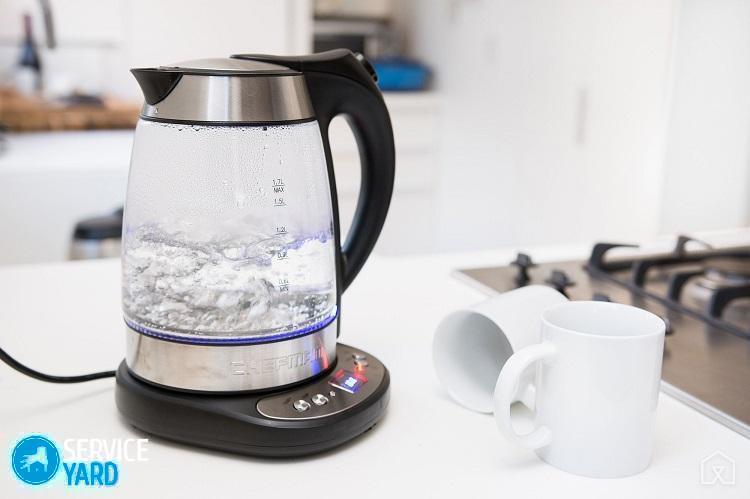
to contents ↑Important! Did you know that tea water can be boiled no more than once? How to boil water? What happens to her during boiling? You will find answers to these and other questions in our article. “Why can’t you boil water a second time?”.
Citric Acid Plus Vinegar
If the acid itself is not able to cope with a thick layer of scale, then vinegar is always ready to help it.
Important! All these manipulations should be carried out in a well-ventilated area.
This method is not suitable for electric kettles, as vinegar can ruin the heating element in the kettle. But for a conventional stainless steel or enameled coating device - just right:
- Pour into a container that needs to be cleaned 0.5 cups of 9% vinegar, dilute it with water. Leave on for 20 minutes.
- Pour 40-60 grams of powder, bring to a boil, leave on low heat for 15 minutes.
- Drain, clean the kettle with a sponge or washcloth, then fill it with clean water and boil.
- The procedure is preferably repeated several times.
Important! If the scum does not want to give up without a fight and after all the procedures still remains on the walls of the dishes, you can leave a hot solution of vinegar and citric acid overnight.
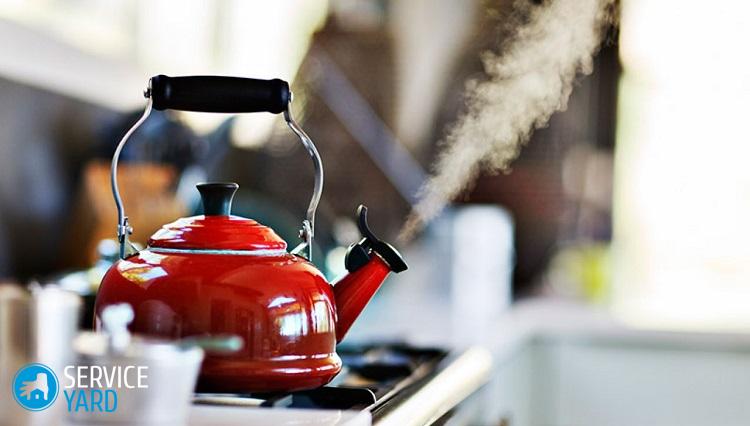
Household cleaning
For especially advanced cases, you can use a combination of citric acid and soda with vinegar:
- First you need to pour soda solution into the dishes. For 1 liter of water is 2 tablespoons of soda. This solution must be brought to a boil and left on low heat for 20-30 minutes. Then drain the liquid and rinse the utensils.
- Then dissolve the acid powder in water and pour the resulting solution into a kettle. 40-60 grams of substance is added per 1 liter of water. The solution was brought to a boil and allowed to cool. When the liquid has cooled, it must be drained and the dishes rinsed.
- Then you can re-clean with soda. As a result of the interaction of soda and acid, the scale layer loosens.
- One third of the dishes are poured with vinegar, which is then diluted with water. The liquid is brought to a boil and left to boil for 20-30 minutes, and then drained.
- After all these procedures, the scum in the teapot becomes pasty and can be easily removed with a wooden spatula or a hard sponge.
- After machining the utensils, water is again boiled in it with the addition of citric acid. This allows you to get rid of traces of scale and remove it completely.
- The cleaned dishes need to be washed well, boil water in it several times, each time draining it.
Important! Cleaning is preferably carried out with gloves so as not to damage the skin of the hands.
If on the eve of cleaning the layer of scale is covered with gruel from citric acid powder and water, then the effect will increase many times.
Important! Teapots must also be cleaned. Find out why you need to carry out this procedure, and a selection of the best cleaning tips you can on our portal in a post "How to clean a teapot from tea plaque?".
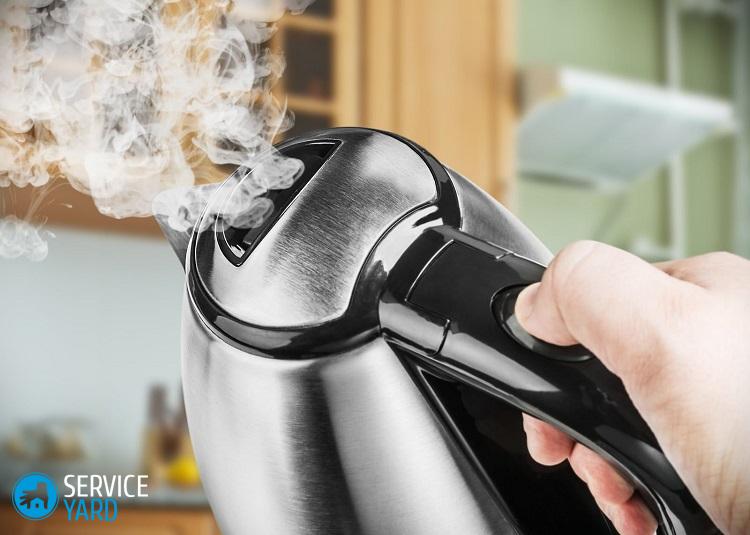
How often do you need to carry out the procedure?
To cope with the raid was easier, you must follow these rules:
- A cleaning procedure is recommended 2-3 times a month, then salt deposits are easier to remove.
- Experts recommend pouring water into the kettle with the “lemon” diluted in it (1 tablespoon per 1 liter of water) for preventive purposes.
- The glass teapot can be wiped with a slice of lemon inside and out and left for 15-20 minutes, and then rinsed.
- Be sure to install filters on taps or drive water through the device for cleaning. Using our tips, you can make water filter yourself.
- Do not forget to wash the inner walls of the dishes daily with a sponge without detergent.
Important! Useful for health, not only for technology, will be the use of water filters. We examined this topic in detail in our separate review. "Which water filter is better?".
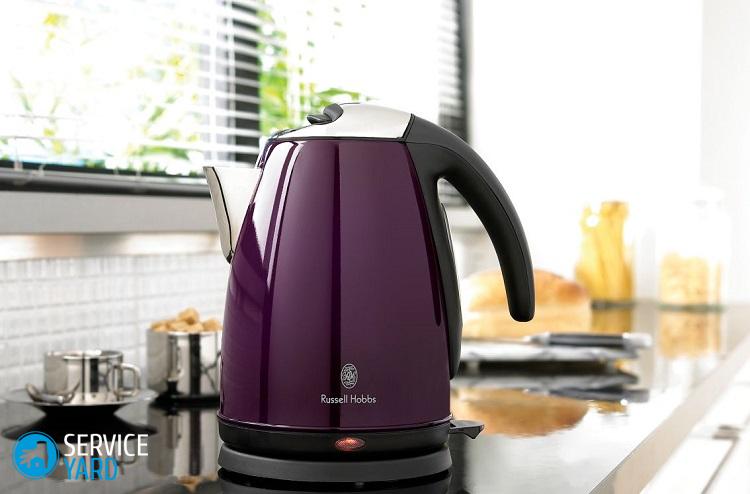
Cleaning the kettle with citric acid outside
Scaling on the walls of the kettle is not the only problem, greasy spots appear on the outer walls of the dishes, and rust spots also appear on the metal. And here the lemon will come to our aid again:
- If the spots of fat are small, then they are not difficult to eliminate. Dip a slice of lemon in fine salt and wipe the problem area. True, this method is not suitable for metal utensils, since metal can darken from salt.
- To clean the metal kettle completely, you need to immerse it in a large container filled with a solution of “lemons” powder. The greater the concentration of the substance and the hotter the water, the faster the cleaning process will go. Details of cleaning the kettle are discussed in the post. "How to clean the kettle from the stainless steel outside?".
- Old fat stains can be cleaned with a mixture of baking soda and citric acid. Mix both components in equal amounts, wet the problem areas and rub them with a mixture. Soda and acid will react and deal with the fat, dividing it into small lumps. You will only need to remove the residues with a damp sponge and wash the kettle.
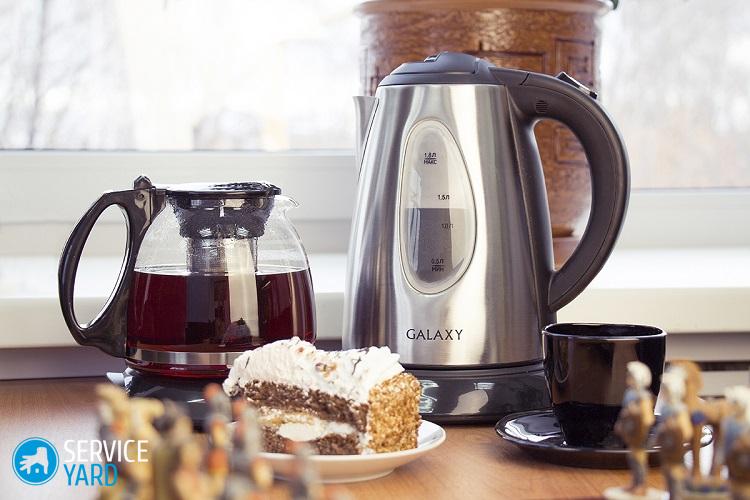
How can citric acid help us clean the kettle from rust?
- For light soiling, prepare a solution based on 1 liter of water 1 tablespoon of the substance. We put the solution on the sponge and wipe the problem areas until the rust is completely removed.
- Lemon juice copes well with this task. Cut the fruit, wipe the surface of the dishes with it for several minutes and leave for a while. Wash cleaned dishes with detergent and rinse with warm water.
- If the rust layer on your kettle is impressive, then it must be immersed in a concentrated solution of “lemon” powder and left for several hours, then rub the stains with a toothbrush. If all rust has not receded, the procedure can be repeated.
to contents ↑Important! Want to turn a regular tea party into a tea ceremony? Decorate the teapot with dolls. To do this, follow the instructions and use patterns from the article with master classes"How to sew a doll on a teapot with your own hands?".
Stock footage
In this article, we told you how to descale a kettle using citric acid and its combination with other substances in several ways. Choose the one that seems more convenient for you, so that the dishes are always in a neat condition, and the taste of water with a touch does not spoil tea, coffee and food.




